Why I am putting TabView into a NavigationView is because I need to hide the bottom tab bar when user goes into 2nd level 'detail' views which have their own bottom action bar.
But doing this leads to another issue: all the 1st level 'list' views hosted by TabView no longer display their titles. Below is a sample code:
import SwiftUI
enum Gender: String {
case female, male
}
let members: [Gender: [String]] = [
Gender.female: ["Emma", "Olivia", "Ava"], Gender.male: ["Liam", "Noah", "William"]
]
struct TabItem: View {
let image: String
let label: String
var body: some View {
VStack {
Image(systemName: image).imageScale(.large)
Text(label)
}
}
}
struct ContentView: View {
var body: some View {
NavigationView {
TabView {
ListView(gender: .female).tag(0).tabItem {
TabItem(image: "person.crop.circle", label: Gender.female.rawValue)
}
ListView(gender: .male).tag(1).tabItem {
TabItem(image: "person.crop.circle.fill", label: Gender.male.rawValue)
}
}
}
}
}
struct ListView: View {
let gender: Gender
var body: some View {
let names = members[gender]!
return List {
ForEach(0..<names.count, id: \.self) { index in
NavigationLink(destination: DetailView(name: names[index])) {
Text(names[index])
}
}
}.navigationBarTitle(Text(gender.rawValue), displayMode: .inline)
}
}
struct DetailView: View {
let name: String
var body: some View {
ZStack {
VStack {
Text("profile views")
}
VStack {
Spacer()
HStack {
Spacer()
TabItem(image: "pencil.circle", label: "Edit")
Spacer()
TabItem(image: "minus.circle", label: "Delete")
Spacer()
}
}
}
.navigationBarTitle(Text(name), displayMode: .inline)
}
}
What I could do is to have a @State var title in the root view and pass the binding to all the list views, then have those list views to set their title back to root view on appear. But I just don't feel so right about it, is there any better way of doing this? Thanks for any help.
